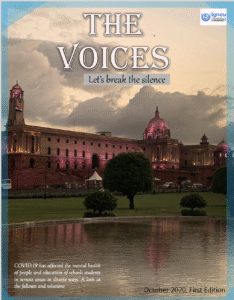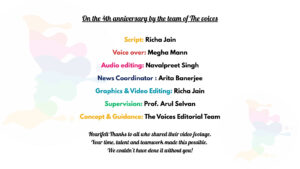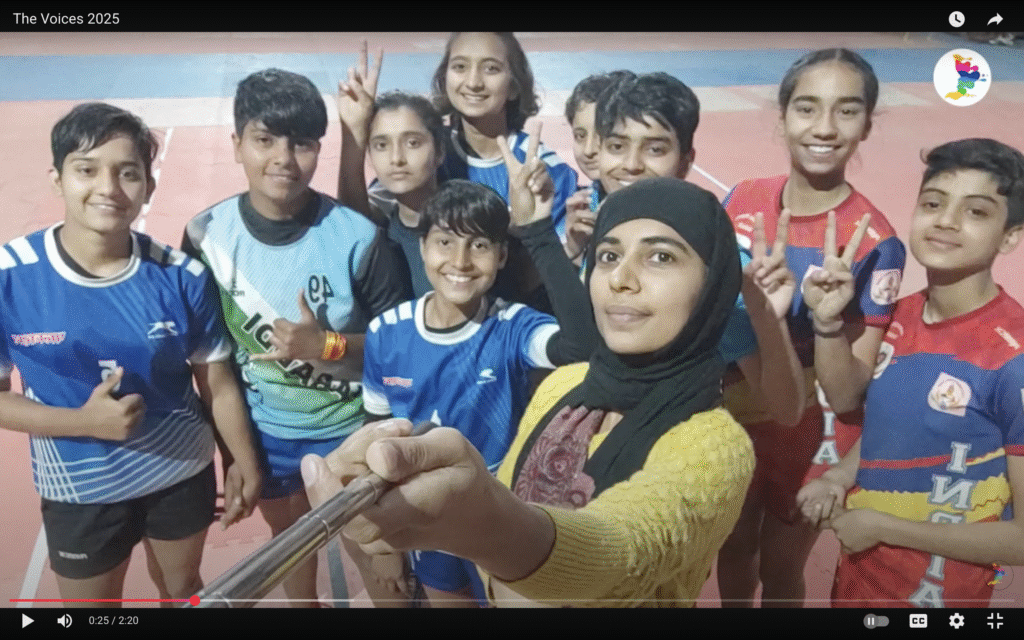IGNOU’s School of Journalism and New Media Studies is rewriting the rules of distance learning with its innovative student-driven digital newsroom, The Voices. It originally began as a simple PDF newsletter and has since evolved into a global cloud-based platform that enables aspiring journalists to collaborate in real-time, regardless of location. It is a movement, rather than just a newsroom, that empowers students, elevates underrepresented voices, and demonstrates that ODL can foster innovative and inclusive journalism.
The Voices, a student-driven digital news portal. It began with a simple goal of providing students with a space to practice journalism beyond the constraints of an Open and Distance Learning (ODL) framework. It emerged primarily to address the dearth of exposure to a newsroom for distance learners. Traditional ODL models frequently lack the practice, experimentation and teamwork that journalism demands.
Let’s Break the Silence
The Voices aim was to imitate a professional editorial environment where students could apply their theoretical knowledge while strengthening their writing, editing, critical thinking and digital production skills. Providing a platform for voiceless and marginalised communities to express themselves was another objective, in line with its tagline, “Let’s Break the Silence.”

CMS doubles up as cloud cloud-based newsroom
The project has demonstrated how ODL students can collaborate in real-time, despite geographical distance. By employing a content management system (CMS), students assume roles similar to those of professional newsroom staff. For example, a student reporter in Chennai might cover the Pamban Bridge in Kanyakumari, upload the report to the CMS, where it is copyedited by a student in Kolkata, reviewed in Punjab, and finally published from Delhi. This model simulates the operations of contemporary, distributed digital newsrooms, responding to the needs of distance learners.
Cross-border cooperation is the foundation of The Voices‘ operations. As digital creators, editors, reporters, and reviewers, students are assigned responsibilities. The CMS uses a methodical process for submitting, editing, reviewing, and pitching stories. The platform encourages users to experiment with different formats, including news reports, infographics, podcasts, and photo essays. Notably, despite crises such as the COVID-19 pandemic, students were able to maintain continuity and resilience by continuing to report, edit, and publish from various locations.
Unique student-led newsroom
Student-led newsrooms have been tested by journalism schools worldwide, including Columbia University and the University of Melbourne. Similar opportunities have been offered in India through university-led magazines and platforms such as Youth Ki Awaaz. The Voices is a groundbreaking example of cloud-based, collaborative journalism in India, although it is the only one to incorporate professional newsroom procedures directly into an ODL framework.
The Voices platform encompasses a range of themes and sectors. They are social issues, health, environment, governance, urban infrastructure and culture. Some examples include stories about the Delhi garbage strike, mandatory rural postings for doctors, and explanations about oil. Students have also contributed stories on architecture, the environment, and multilingual cultural experiences. The platform thrives on inclusivity, with marginalised voices and untold stories being brought to the forefront.

The Voices’ main objective is to promote inclusivity by elevating underrepresented voices and shedding light on tales from nooks and corners of the country. It features profiles that are frequently overlooked by the media, such as young organisations leading climate campaigns, women craftspeople reviving endangered crafts or migrant
workers surviving. The working class receives the credit it deserves, technology is evaluated based on its social effects, and health is continuously observed. Overall, the voices of the common people find an echo across our news efforts.
The project aims to diversify into multimedia formats, including data-driven journalism, video explainers, and podcasts. More international cooperation and multilingual editions are also planned. The long-term goal is to establish The Voices as a credible and inclusive platform that shapes public narratives, while also serving as a learning laboratory.
Since then, The Voices has established itself to be more than just a student newspaper. It is an open forum for truth, a training ground for digital storytelling and an experiment in collaborative learning. As it expands, it seeks to empower aspiring journalists and reshape the parameters of distance learning in media education.
Copy Editor: Megha Mann

